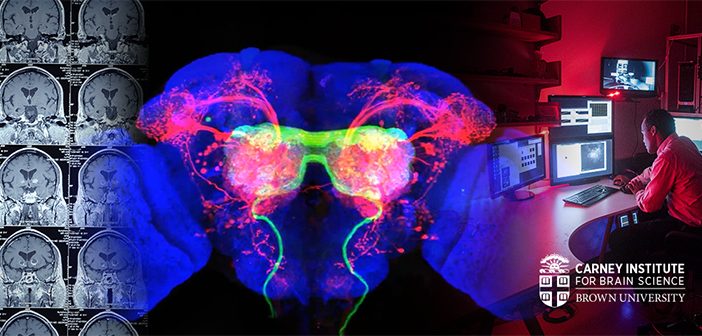$100 million gift to Brown will advance research into brain and nerve disorders.
A new $100 million gift to Brown University’s brain science institute from Robert J. Carney, MBA ’61 and Nancy D. Carney will drive an ambitious agenda to quicken the pace of scientific discovery and help find cures to some of the world’s most persistent and devastating diseases, such as ALS and Alzheimer’s.
Robert Carney graduated in Brown’s undergraduate Class of 1961, is a long-serving Brown trustee, and is founder and chairman of Vacation Publications Inc. Previously, he was a founder of Jet Capital Corp., a financial advisory firm, and Texas Air Corp., which owned Continental Airlines and several other airlines. Nancy Doerr Carney is a former television news producer.
The Carneys’ gift changes the name of the Brown Institute for Brain Science to the Robert J. and Nancy D. Carney Institute for Brain Science, and establishes the institute as one of the best-endowed university brain institutes in the country. Brown President Christina Paxson says the $100 million donation—one of the largest single gifts in Brown’s history—will help establish the University as a leader in devising treatments and technologies to address brain-related disease and injury.
“This is a signal moment when scientists around the world are poised to solve some of the most important puzzles of the human brain,” Paxson says. “This extraordinarily generous gift will give Brown the resources to be at the forefront of this drive for new knowledge and therapies. We know that discoveries in brain science in the years to come will dramatically reshape human capabilities, and Brown will be a leader in this critical endeavor.”
The gift will allow the Carney Institute to accelerate hiring of leading faculty and postdoctoral scholars in fields related to brain science, supply seed funding for high-impact new research, and also fund essential new equipment and infrastructure in technology-intensive areas of exploration.
Core areas of research at the institute include work on brain-computer interfaces to aid patients with spinal injury and paralysis; innovative advances in computational neuroscience to address behavior and mood disorders; and research into mechanisms of cell death as part of efforts to identify therapies for neurodegenerative diseases that include amyotrophic lateral sclerosis (ALS) and Alzheimer’s.
Carney says he is excited that he and his wife are making their gift at a time when brain science has emerged as one of the fastest-growing programs at Brown, both in terms of research and student interest.
“Nancy and I have long been impressed by the phenomenal research and education of bright young minds that we see at Brown,” Carney says. “We are excited to see the brain institute continue to grow and serve society in ways that are vitally important.”
With up to 45 labs across campus engaged in research at any given time—and 130 affiliated professors in departments ranging from neurology and neurosurgery to engineering and computer science—Brown’s brain science institute already has built a reputation for studying the brain at all scales, says Diane Lipscombe, PhD, the director of the institute since 2016 and a professor of neuroscience. From studying genes and circuits, to healthy behavior and psychiatric disorder, the institute’s faculty contribute expertise to routinely produce insights and tools to see, map, understand and fix problems in the nervous system.
In addition, as the brain institute’s work grows in its breadth, undergraduates continue to take on key roles as researchers, reflecting a distinctive aspect of Brown’s undergraduate curriculum. About a quarter of all Brown undergraduates take Introduction to Neuroscience, demonstrating the excitement in the field.
“This is a transformative moment that is going to catapult Brown and our brain science institute,” says Lipscombe, who is president-elect of the Society for Neuroscience, the field’s international professional organization. “We will be able to crack the neural codes, push discoveries forward, and address some of the largest challenges facing humanity, at the same time training the next generation of brain scientists.”
Continue reading here.




